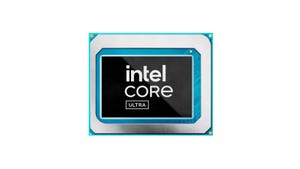One year into its operation as a merged entity, monster vendor Nokia Siemens Networks is still facing a challenging market. Competition is strong and the growth outlook is not good, as chief executive Simon Beresford-Wylie readily admits the carrier was caught on the back foot. "In 2006, at the time of the merger, the market looked like it was growing. But this wasn't the case," he says.
June 12, 2008

One year into its operation as a merged entity, monster vendor Nokia Siemens Networks is still facing a challenging market. Competition is strong and the growth outlook is not good, as chief executive Simon Beresford-Wylie readily admits the vendor was caught on the back foot. “In 2006, at the time of the merger, the market looked like it was growing. But this wasn’t the case,” he says.
On the face of it the Finnish-German vendor is still riding out the same turbulent market conditions that caused it, and Alcatel-Lucent, to merge in the first place. For the first quarter the joint venture posted an operating loss of Eur74m, although sales more than doubled from Eur1.7bn in the first quarter of 2007 to Eur3.4bn. But under the surface the company is also tackling an integration exercise of “breathtaking complexity.”
“You can’t really understand what’s involved in a merger of this scale until you’re actually involved in one,” Beresford-Wylie says. “But I think we’re making good progress, despite the complexity. It’s not just Finland and Germany, there are all sorts of other elements such as fixed and mobile portfolios to merge as well.”
Indeed, the combined workforce of NSN numbers more than 60,000 employees, spread across 100 countries and 63 product divisions. The company has 262 operator customers in 119 countries, which translates into a subscriber base of more than 1.5 billion. At the same time as consolidating these operations, NSN is set on a target of reaping $1.5bn in savings by the end of this year, and slashing headcount by between ten and 15 per cent.
Beresford-Wylie says the company is presently in “the second wave of integration,” and will be focusing very closely on profitability and cash flow. “No one wants to work in an industry with 0 to 5 per cent operating profit margin,” he says.
Speaking at a press event in London this week, Beresford-Wylie and other senior NSN executives highlighted the challenges and opportunities facing one of the world’s biggest equipment vendors.
“It used to be that we would get up in the morning and strap on a shield and bear skin, grab a spear and go out hunting customers,” Beresford-Wylie said. “But the market has moved on from an expanding customer base to a more stable environment, and we have had to change our strategy.”
NSN forecasts 5 billion mobile connections by 2015, and believes that as much as 97 per cent of these new subscriptions will come from emerging markets, with at least half of this amount coming from India and China. By comparison, the company estimates fixed line connections at about 400 million in 2008, with expectations that this figure will double by 2015.
In line with these forecasts NSN sees connectivity as its prime target and has its sights set on the number one market position. “Connectivity is extremely important we need to lead in selected products,” says Beresford-Wylie, adding that the company is focusing its R&D on access and service management. NSN, like the majority of equipment makers, has a high research intensity and about 14 to 15 per cent of its revenue is ploughed back into R&D.
But the company is hard nosed about its portfolio. “If we can’t be number one or a strong number two in a market then we will cast a critical eye on that part of the portfolio,” Beresford-Wylie says, highlighting the applications space as one of these carefully considered sectors. “We lead in voice but are diversifying in other content and applications areas and here is where we see the benefit of partnering,” he said. “Compared to our competitors, our main differentiation comes from our strong position in service management and charging,” explaining that NSN also has a strong R&D focus on OSS and BSS.
And with such rapid and explosive growth ahead, NSN’s chief technical officer, Stefan Scholz, maintains the main challenge facing the industry is connecting the next billion. “These subscribers are all coming from very low ARPUs, and we need to provide coverage for very rural areas,” Scholz said. “For many of these people their first experience of the internet is going to be on the mobile.”
And with the internet as the world’s main source of innovation, the next hurdle the industry faces is an anticipated 100 fold increase in traffic in the next eight years, which has to be delivered at the lowest total cost of ownership. In the developed world, “HDTV and STBs are all delivering lots of traffic as are new, smarter devices and flat rate subscriptions,” says Scholz, “the problem facing the industry is how to grow revenue as traffic grows – we need to optimise cost despite high capacity and low ARPU.”
According to Scholz, much of this optimisation will be taking place in the transport layer, because access technologies are set to remain largely separate, due to the physical inability of being able to merge copper, fibre and air. “But there will be more centralisation,” Scholz said. “There is still a legacy stovepipe network model but sooner or later it will move to a flat architecture. Ultimately, the main growth is coming from mobile but the majority of the traffic is coming from fixed, and we don’t really see that changing.” Indeed, the industry is seeing increased demand for Ethernet in mobile backhaul because of all the IP traffic coming from 3G networks.
And cost efficiencies are also taking their toll on an already competitive market. Marc Rouanne, head of NSN’s radio access business unit, said energy efficiency is now driving purchase decisions, “as operators are spending too much on energy in their opex.” The vendor reveals that the access infrastructure contributes 90 per cent of the energy on a network and NSN claims to offer up to a 70 per cent reduction in energy usage with its own kit. “This is becoming a trigger for base station replacement,” says Rouanne.
NSN revealed that in the last 14 months, it has replaced 18,000 rival base stations as its customers strive for lower operational costs. The company said 22 operators in 15 countries had elected to replace existing kit with NSN products. None of the executives present would put that figure in perspective, but research suggests it would be enough to network up a medium to large European country. Although, it is unclear what sort of margins NSN was making on those deployments, with Beresford-Wylie noting the intense competition between NSN and its rivals Ericsson, Alcatel-Lucent, and the competitively priced Huawei and ZTE, which is the main reason NSN is investing heavily in service management and charging platforms.
Read more about:
DiscussionAbout the Author(s)
You May Also Like







.png?width=300&auto=webp&quality=80&disable=upscale)

.png?width=300&auto=webp&quality=80&disable=upscale)
_1.jpg?width=300&auto=webp&quality=80&disable=upscale)



.png?width=800&auto=webp&quality=80&disable=upscale)